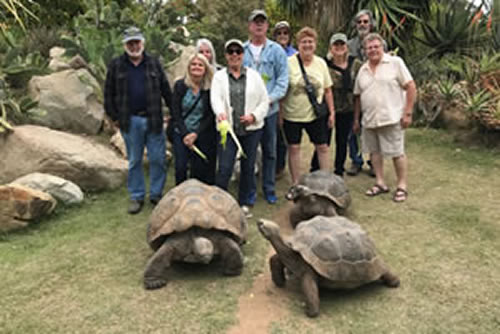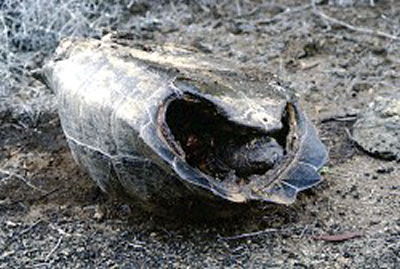COMMON NAME: Galápagos Tortoise
SCIENTIFIC NAME: Chelonoidis nigra
TYPE: Reptiles
DIET: Herbivore
AVERAGE LIFE SPAN IN THE WILD: 100 or more years
SIZE: 4 feet
WEIGHT: 475 pounds

It is possible, though perhaps unlikely, that among the remaining giant tortoises of the Galápagos Islands, there exists an old-timer that was a hatchling at the time of Charles Darwin's famous visit in 1835. Giant tortoises are the longest-lived of all vertebrates, averaging over 100 years. The oldest on record lived to be 152.
They are also the world's largest tortoises, with some specimens exceeding 5 feet in length and reaching 550 pounds.
Behavior
Galápagos tortoises lead an uncomplicated life, grazing on grass, leaves, and cactus, basking in the sun, and napping nearly 16 hours per day. A slow metabolism and large internal stores of water mean they can survive up to a year without eating or drinking.Threats to Survival
There are likely just 10 types of giant tortoises left in the Galápagos, down from 15 when Darwin arrived. Hunted as food by pirates, whalers, and merchantmen during the 17th, 18th, and 19th centuries, more than 100,000 tortoises are estimated to have been killed off. Nonnative species such as feral pigs, dogs, cats, rats, goats, and cattle are a continuing threat to their food supply and eggs.Many of the tortoise's subspecies are now listed as endangered or critically endangered, and have been strictly protected by the Ecuadorian government since 1970. Captive breeding efforts by the Charles Darwin Research Station are also having positive effects.
